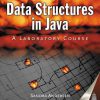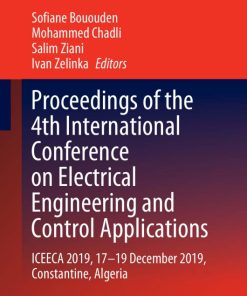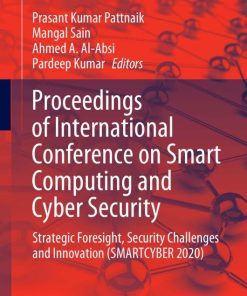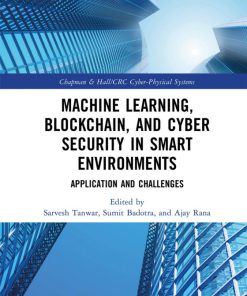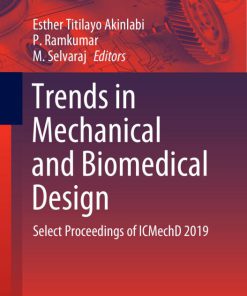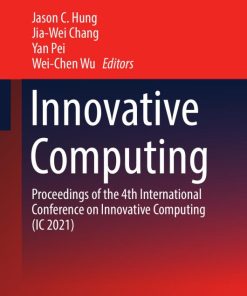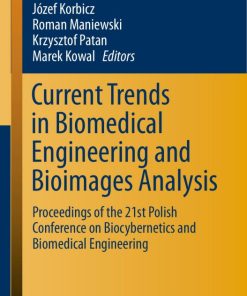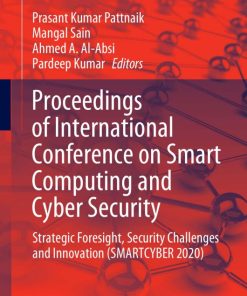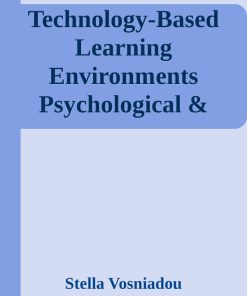(Ebook PDF) Foundations and Trends in Smart Learning Proceedings of 2019 International Conference on Smart Learning Environments 1st edition by Maiga Chang, Elvira Popescu 9811369089 9789811369087 full chapters
$50.00 Original price was: $50.00.$25.00Current price is: $25.00.
Authors:Maiga Chang, Elvira Popescu, , Series:Education [254] , Author sort:Maiga Chang, Elvira Popescu, , Languages:Languages:eng , Published:Published:Feb 2019 , Publisher:Springer
Foundations & Trends in Smart Learning Proceedings of 2019 International Conference on Smart Learning Environments 1st edition by Maiga Chang, Elvira Popescu – Ebook PDF Instant Download/DeliveryISBN: 9811369089, 9789811369087
Full download Foundations & Trends in Smart Learning Proceedings of 2019 International Conference on Smart Learning Environments 1st edition after payment.
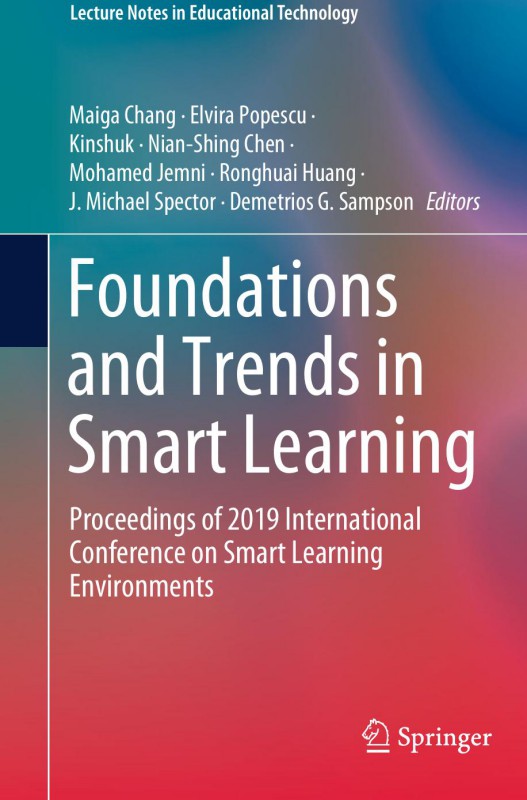
Product details:
ISBN-10 : 9811369089
ISBN-13 : 9789811369087
Author : Maiga Chang, Elvira Popescu
This book focuses on the interplay between pedagogy and technology, and their fusion for the advancement of smart learning environments. It discusses various components of this interplay, including learning and assessment paradigms, social factors and policies, emerging technologies, innovative application of mature technologies, transformation of curriculum and teaching behavior, transformation of administration, best infusion practices, and piloting of new ideas. The book provides an archival forum for researchers, academics, practitioners and industry professionals interested and/or engaged in reforming teaching and learning methods by promoting smart learning environments. It also facilitates discussions and constructive dialogue among various stakeholders on the limitations of existing learning environments, the need for reform, innovative uses of emerging pedagogical approaches and technologies, and sharing and promoting best practices, leading to the evolution, design and implementation of smart learning environments.
Foundations & Trends in Smart Learning Proceedings of 2019 International Conference on Smart Learning Environments 1st Table of contents:
1 A framework for designing an immersive language learning environment integrated with educational r
1 Introduction
2 Method
3 Preliminary results
3.1 Results of research question 1
3.2 Results of research question 2
4 Conclusion remarks
References
2 A Framework of Learning Activity Design for Flow Experience in Smart Learning Environment
1 Introduction
2 Literature Review
2.1 Flow Experience
2.2 Smart Learning Environment(SLE)
3 Framework of Learning Activity Design
3.1 Proposed Framework
3.2 Interpretation of the proposed framework
4 An Example for this Framework
5 Conclusion
References
3 A Partner Robot for Decreasing Negative Concerns in Collaborative Reading
1 Introduction
2 Robot as Partner
2.1 Roles
2.2 Collaborative Reading Techniques
3 Partner Robot System
3.1 Framework
3.2 Functions
4 Case Study
4.1 Preparation and Procedure
4.2 Results
5 Conclusion
References
4 An Architecture for Mobile-based Assessment Systems in Smart Learning Environments
1 Introduction
2 Related Work
3 Foundations of the architecture for mobile-based assessment systems for smart learning
4 Mobile-based assessment (client side)
4.1 Interface and Support Services
4.2 Pedagogical Support
4.3 Assessment
4.4 Learning Analytics
4.5 Recommender Module
4.6 Data Access Services
5 Web Application (server side)
6 Implementing the architecture (K-English application)
7 Preliminary Evaluation Study
8 Conclusions
References
5 Analysis of Key Features in Conclusions of Student Reports
1 Introduction
2 Related Work
3 Methodology and Corpus
4 Model Overview
5 Conclusion Analysis in Practice
5.1 Pilot Test
6 Conclusions
References
6 Artificial Intelligence and Commonsense
1 Introduction
2 Defining CSK
3 CSK in AI Applications
4 Proposed Enhanced Form of Educational Technology
5 Added CSK Features
References
7 Can Fragmentation Learning Promote Students’ Deep Learning in C Programming?
1 Introduction
2 Literature Review
3 Design of Dquiz
3.1 Architecture of Dquiz
3.2 Function design of Dquiz
4 Evaluation of academic performance
4.1 Data collection
4.2 Methodology
4.3 Result
5 Discussion
6 Conclusion and future work
7 Acknowledgments
8 References
8 Challenges in recruiting and retaining participants for smart learning environment studies
1 Introduction
2 Study Context
2.1 Procedure and Participants
2.2 Recruitment and Retainment Strategies
2.3 Instrument and Data Analysis
3 Results
4 Discussion and Conclusion
References
9 Constructing a Hybrid Automatic Q&A System Integrating Knowledge Graph and Information Retrieval T
1 Introduction
2 Related Works
3 System Structure
3.1 Offline Steps
3.2 Online Steps
4 Experiments
4.1 Test Dataset Generation
4.2 Experimental Result
5 Conclusion
6 Acknowledgement
References
10 Conversation Quest in MEGA World (Multiplayer Educational Game for All)
1 Introduction
2 MEGA World (Multiplayer Educational Game for All)
3 Conversation Quest Creation
4 Solving a Conversation Quest
5 Conclusion
Reference
11 Correlational Analysis of IRS Features and Learning Performance in Synchronous Sessions of an Onl
1 Introduction
2 Literature review
2.1 Pedagogical applications of IRS tool features and learning performance
3 The tool features of Kahoot and mQlicker and learning task designs
4 Methods
4.1 Participants, instruments and procedure
5 Results and discussions
5.1 The relationship between students’ perceived IRS features and learning performance in the sync
6 CONCLUSIONS
References:
12 Creating Smart Learning Environments with Virtual Worlds
1 Smart Learning Environments (SLE)
2 Virtual Worlds
3 Using Virtual Worlds to Create Smart Learning Environments
3.1 Visualization of Inaccessible and Invisible Content
3.2 Role-Playing and Identity Exploration
3.3 Situated Learning
3.4 Safe and Adaptive Environments for Skill Practice
3.5 Spatial Simulation and Virtual Field Trips
3.6 Social Interactions and Collaboration
3.7 Virtual Performance Assessments
References
13 Cultural Embodiment in Virtual Reality Education and Training: A Reflection on Representation of
1 Introduction
1.1 What Is Virtual Reality?
1.2 What is Embodiment?
2 The Importance of Embodiment.
2.1 Embodiment Effects Behavior
2.2 Embodiment Effects Satisfaction
2.3 Embodiment Effects Learning
3 Beyond User Embodiment: Embodying Trainers
4 Conclusion
References
14 Design of Online Teacher Training Mode: a Cognitive Apprenticeship approach
1 Introduction
2 The cognitive apprenticeship
3 Methods and procedures
3.1 Sociological context
3.2 Sequencing of learning activities
3.3 Content
3.4 Method
4 Conclusion and discussion
References
15 Diagnosis with Linked Open Data for Question Decomposition in Web-based Investigative Learning
1 Introduction
2 Web-based Investigative Learning
2.1 Model of Web-based Investigative Learning
2.2 iLSB
2.3 Issue
3 Method of diagnosis decomposed questions
3.1 Linked Open Data (LOD)
3.2 Framework of Diagnosis
4 Diagnosis of question decomposition
4.1 Relevance between q-keywords
4.2 Similarity between Q-keywords
4.3 Diagnosis Procedure
5 Case Study
5.1 Purposes and Procedure
5.2 Results and Discussions
6 Conclusion
References
16 Emarking: A collaborative platform to support feedback in higher education assessment
1 Introduction
2 Theoretical framework
2.1 Quality of feedback dimensions
2.2 Enterprise systems architecture
2.3 Collaboration
3 Platform description
3.1 Printing module
3.2 Scanning module
3.3 On Screen Marking module
3.4 Markers training
3.5 Peer review
Acknowledgements
References
17 How Technologies Change Classrooms – A Case Study of K-12 Education in Sudan
1 Introduction
2 Literature Review
3 Research Questions
4 Research Methodology
5 Results and Discussion
5.1 Current situation of the classroom equipment
5.2 E-Classroom
5.3 National Access Projects
5.4 Teacher Training Project
6 Conclusion
References
18 Influence of Pre-service and In-service Teachers’ Gender and Experience on the Acceptance of AR
1 Introduction
2 Lecture Review
2.1 AR in education
2.2 The UTAUT Model and Research Hypotheses
3 Method
3.1 Participants and Process
3.2 Instrument
4 Results
4.1 Pre-service teacher and in-service teacher
4.2 Gender
4.3 Experience in using AR
5 Discussion and conclusion
References
19 Integrating Enhanced Peer Assessment Features in Moodle Learning Management System
1 Introduction
2 Related Work
3 Mechanisms for Enhancing the Workshop Module
4 Illustrating the Use of the Enhanced Workshop Module
4.1 Teacher Functionalities
4.2 Student Functionalities
5 Conclusions
References
20 Investigation Report on the Status and Needs of Beijing Citizens for Lifelong Learning
1 Introduction
2 Research methods and design
2.1 The overall research framework of the project
2.2 Research methods
2.3 Research tools
2.4 Statistical tools
3 Research result
3.1 Distribution of characteristics of effective sample groups
3.2 General Situation of Lifelong Learning Status of Beijing Citizens
3.3 Differences in the status quo and needs of lifelong learning among different groups
4 Conclusion
References
21 Learning to Use the Fitness Equipment: Development and Evaluation of a Context-aware System with
1 Introduction
2 System Design
3 Method
4 Results
4.1 Analysis of Interview
5 Discussion and Conclusion
References
22 Library Makerspaces and Connected Learning to Advance Rural Teen Creativity
1 Introduction
2 Analyzing Difficulties on Serving Rural Teens
2.1 Shift in Demographics
2.2 Impact of Technology
3 Solution: Training, Makerspaces, Connected Learning
3.1 Training of Rural Educators and Librarians
3.2 Makerspaces
3.3 Connected Learning Activities
4 Conclusion
References
23 Mobile-Based Teacher Professional Training: Influence Factor of Technology Acceptance
1 Introduction
2 Literature review
2.1 Technology acceptance theory and model
2.2 Technology acceptance of mobile learning
3 Conceptual framework and hypotheses
4 Methodology
5 Data analysis and results
6 Discussions and conclusions
References
24 Personalized Adaptive Learning: An Emerging Pedagogical Approach Enabled by a Smart Learning Envi
1 Introduction
2 Analysis: Comparing the two pillars of personalized adaptive learning
2.1 The differences and similarities between personalized learning and adaptive learning
2.2 Constructing the relational diagram among related learning methods
3 Core concepts: The values of Personalized Adaptive Learning
4 Framework: The Portrait of Personalized Adaptive Learning
Acknowledgements
References
25 Prototyping theory: Applying Design Thinking to adapt a framework for Smart Learning Environments
1 Introduction and Problem Statement
2 Design Thinking as a Human-Centered Design Approach
2.1 A Design Sprint as an interactive learning format
3 Applying Design Thinking to Transfer Smart Learning Concepts into Practice
3.1 Smart learning Design Sprint
4 Identified Success Criteria to Adapt a Framework for SLEs Inside Organizations
References
26 Research on the Status Quo of Smart School Development in China
1 Introduction
2 Literature
3 Method
3.1 Research Sample
3.2 Questionnaire Design
4 Result
4.1 The Status Quo of Smart School Development
4.2 Smart School Development in Different Regions
4.3 Smart School Development across Different School Types
5 Discussion and Conclusion
References
27 Towards the Enactment of Learning Situations Connecting Formal and Non-Formal Learning in SLEs
1 Introduction
2 Architecture Proposal
3 Example of a Learning Situation
4 Conclusions and Future Work
Acknowledgements
References
28 Using augmented reality in a beginning drawing course for design students
1 Introduction
2 Augmented reality and beginning drawing
3 Drawing construction
4 Exhibition
5 Citations
People also search for Foundations & Trends in Smart Learning Proceedings of 2019 International Conference on Smart Learning Environments 1st:
foundations and trends in optimization
foundations and trends in finance
foundations and trends® in machine learning
foundations and trends in machine learning
smart foundations and beyond



